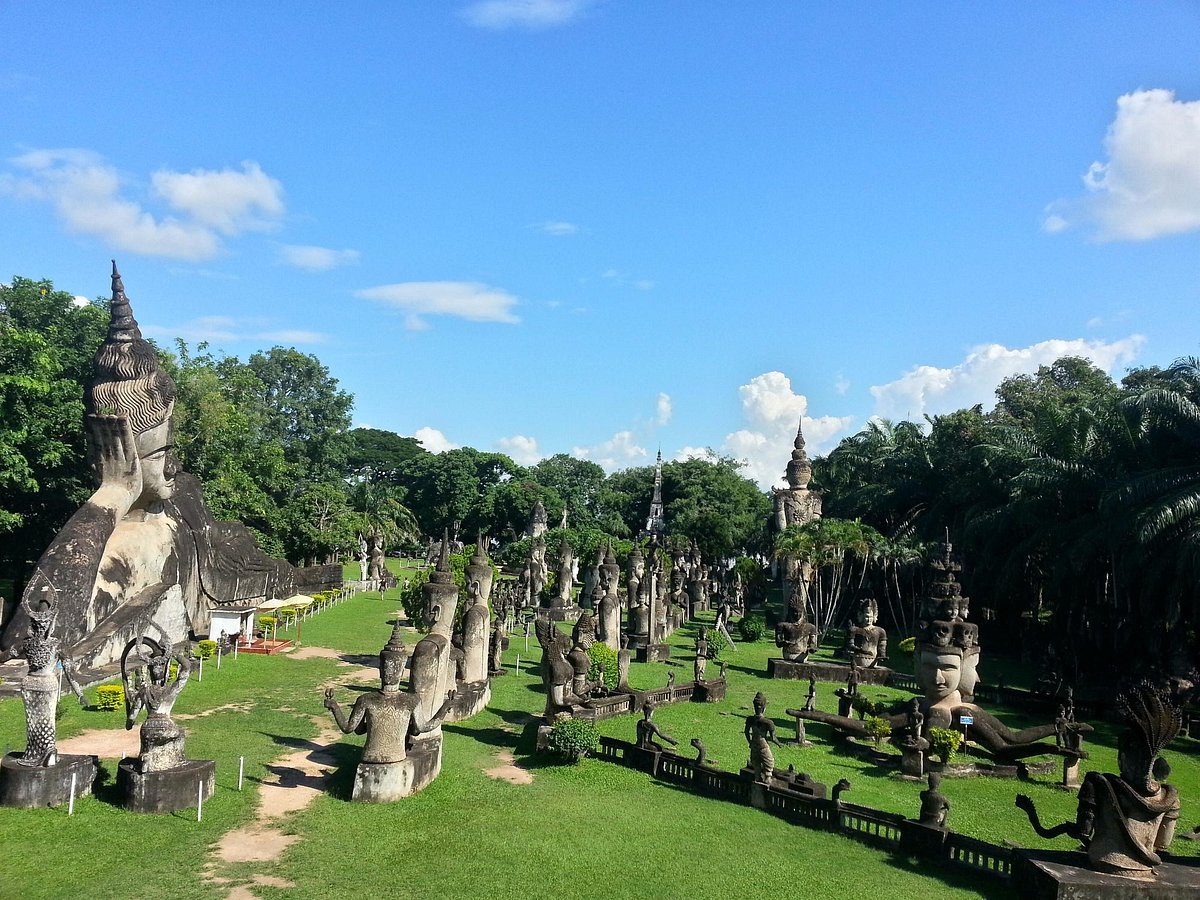Visiting the serene hills of Sikkim, India, Buddha Park, also known as Tathagata Tsal, is a tranquil oasis that beautifully embodies the essence of peace and spirituality. This remarkable site, located in the town of Ravangla, is a testament to the rich Buddhist heritage of the region and has become a significant pilgrimage and tourist destination. With its awe-inspiring statue of Buddha, lush gardens, and serene atmosphere, Buddha Park invites visitors from around the globe to immerse themselves in its spiritual ambiance and natural beauty.
The Genesis of Buddha Park
Buddha Park was inaugurated in 2013 and has since become a symbol of peace and harmony. The park was conceptualized as part of Sikkim’s initiative to promote Buddhist culture and attract spiritual tourism. The centerpiece of the park is the towering statue of the Buddha, standing at an impressive 130 feet. This magnificent statue is not only a remarkable work of art but also serves as a source of inspiration for visitors seeking solace and tranquility.
The construction of Buddha Park was supported by the Sikkim government, along with various Buddhist organizations. The park’s design incorporates elements of traditional Tibetan architecture, with prayer flags fluttering in the breeze and beautiful gardens that provide a serene environment for meditation and reflection.
Architectural Marvel
The statue of Buddha, a representation of the Gautama Buddha, is an architectural marvel that showcases intricate craftsmanship. The statue is made of fiberglass, adorned with vibrant colors that capture the essence of Tibetan Buddhist art. The serene expression on Buddha's face radiates peace, inviting visitors to reflect on their own spiritual journeys.
Surrounding the statue is a well-maintained park featuring landscaped gardens, pathways, and meditation spots. The gardens are filled with various plants, flowers, and prayer wheels, creating a peaceful environment that enhances the overall experience. The park’s design emphasizes harmony with nature, allowing visitors to connect with their surroundings and engage in quiet contemplation.
Spiritual Significance
Buddha Park Ravangla holds profound spiritual significance for both Buddhists and those seeking spiritual solace. The park serves as a site for various religious ceremonies, including prayer sessions and meditation retreats. Visitors often engage in rituals such as circumambulating the statue, offering prayers, and spinning prayer wheels, which are traditional practices in Buddhism.
The atmosphere of the park encourages mindfulness and introspection, making it an ideal spot for meditation. The gentle sounds of nature, coupled with the serene presence of the Buddha statue, create an environment conducive to spiritual growth and reflection.
Cultural Heritage
Sikkim, with its rich tapestry of cultures and traditions, is predominantly influenced by Buddhism. The establishment of Buddha Park reinforces the cultural heritage of the region, showcasing the importance of Buddhism in Sikkim’s history. The park not only attracts local devotees but also draws tourists and pilgrims from around the world, fostering a sense of cultural exchange and understanding.
The presence of nearby monasteries, such as the nearby Ralang Monastery and Bon Monastery, adds to the spiritual landscape of the area. These monasteries, with their vibrant rituals and practices, complement the tranquil environment of Buddha Park and provide visitors with an opportunity to explore the deeper aspects of Buddhist philosophy.
Activities and Experiences
Visitors to Buddha Park can engage in a variety of activities that enhance their experience. From leisurely walks through the gardens to guided meditation sessions, the park offers something for everyone. Here are some popular activities that visitors can enjoy:
- Meditation and Mindfulness: Many visitors come to the park to meditate. The peaceful surroundings and the majestic presence of the Buddha statue create an ideal atmosphere for deep reflection and mindfulness practices.
- Photography: The park’s picturesque landscapes and the stunning Buddha statue provide excellent opportunities for photography. Visitors can capture the beauty of the gardens, the statue, and the panoramic views of the surrounding hills.
- Cultural Workshops: Occasionally, the park hosts cultural workshops that introduce visitors to various aspects of Buddhist philosophy and practices. These workshops provide insights into meditation techniques, rituals, and the significance of Buddhist art.
- Nature Walks: The well-maintained pathways in the park make it an excellent place for nature walks. Visitors can explore the gardens, enjoy the fresh mountain air, and soak in the natural beauty that surrounds them.
- Local Cuisine: The nearby eateries and food stalls offer a taste of local Sikkimese cuisine. Visitors can savor traditional dishes and experience the culinary heritage of the region.
Accessibility and Best Time to Visit
Buddha Park is easily accessible from major towns in Sikkim. Ravangla is well-connected by road, and visitors can reach the park by taxi or local transport. The best time to visit is during the spring (March to May) and autumn (September to November) months, when the weather is pleasant and the park is in full bloom.
Conclusion
Buddha Park in Ravangla is not just a tourist attraction; it is a sanctuary of peace, spirituality, and cultural heritage. The park’s stunning landscapes, the magnificent statue of Buddha, and its serene atmosphere make it a must-visit destination for anyone seeking solace in nature and spirituality. Whether you are a devout Buddhist or simply someone looking for a peaceful retreat, Buddha Park offers an experience that resonates deeply with the heart and soul.
As Sikkim continues to promote its rich Buddhist culture and spiritual tourism, Buddha Park stands as a shining example of how nature, art, and spirituality can come together to create a place of profound beauty and meaning. A visit to this remarkable park is sure to leave an indelible mark on the hearts of all who experience its tranquility and charm.





Comments